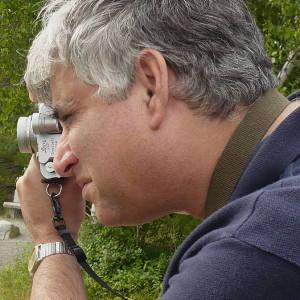Navy Yard Sign. GX1, Leitz Summitar 50mm.
When I went back to school some years ago to learn x-ray technology, I attended an institution affiliated with the Massachusetts General Hospital. The MGH Institute of Health Professions has its premises in the Charlestown Navy Yard. As a result of my daily trips for two years, either to attend classes or catch the shuttle bus to MGH for clinical training, I got to know this 30-acre site down on Boston’s waterfront quite well. According to my good friends Google and Wiki, the Yard served the U.S. Navy as a shipbuilding and repair facility from 1800 until its closure in 1974. During this time it produced about 200 new ships, mostly during the two World Wars. As I read through the list of destroyers that were built right there, serving in all theatres of WW2, history seemed very close. After Japan attacked Pearl Harbor in 1941, Hitler ordered Admiral Doenitz to unleash his U-Boats on the Eastern Seaboard of the U.S. in an operation called “Paukenschlag”: the U-Boats were to “beat the sea surface like a drum” with the explosions of their torpedoes. And so it was for about two years. The Germans called it “Die Gluckliche Zeit”, the “Happy Time” when the U-Boaters picked off millions of tons of shipping both in mid-Atlantic and along the U.S. East Coast, pretty-much unmolested. However, Hitler failed to learn the lesson of history offered by WW1 – for which we should all be grateful...: When the United States entered the war after the sinking of the Lusitania in 1917, the Sleeping Giant was awakened. America had (and has) almost unlimited natural resources, technological know-how and man-power to throw at the war effort. So this became the task assigned to the Charlestown Navy Yard and other shipyards: producing destroyers and Liberty Ships in such quantities that trans-Atlantic convoys carrying war materiel to Europe could be adequately protected and U-Boats destroyed faster than the Germans could replace them.
Today’s Blip is of a sign on one of the old buildings in the Navy Yard. For a long time, I remember the original sign was displayed. This one looks like a reproduction. Again, I chose a lens which matches the era. This is the Summitar 50mm f1:2. It was offered in the Leitz catalog from 1939–1953, replaced the Summar and was the first coated lens offered by the company. My example is from 1950. To my eye, the Summitar has the most unique signature of all the veteran lenses. The image is tack sharp – if you focused accurately… There is a certain luminous quality which may have something to do with its larger front lens being made up of two cemented elements to reduce the vignetting of the Summar. And also the use of new lower refractive index glasses which Leitz was developing at the time.

Comments
Sign in or get an account to comment.


